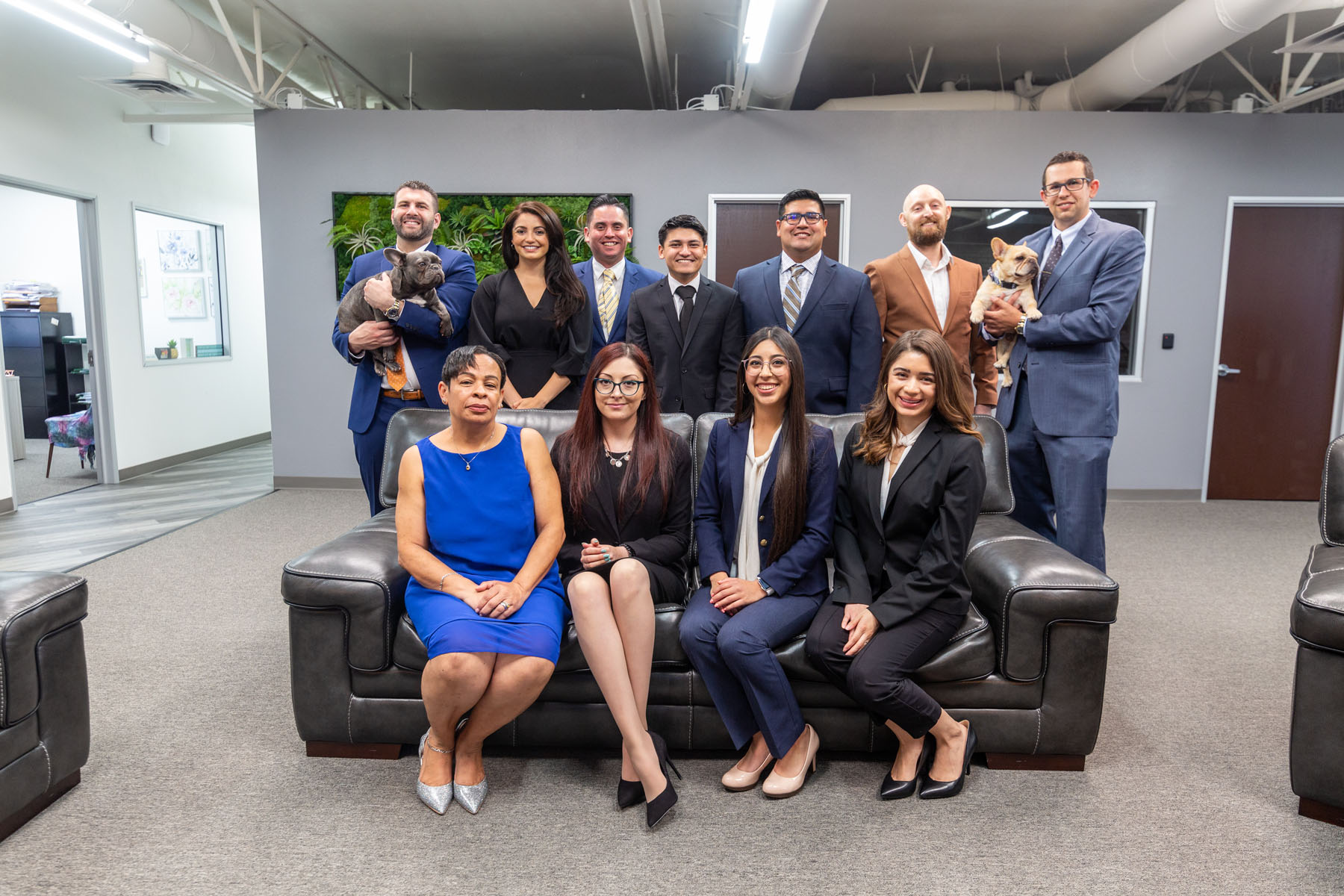From the time California drivers begin studying the state’s driver handbook, we hear the phrase “yield right of way.” In spite of the familiarity of the term, its actual meaning is often evasive. Most often, drivers believe it applies to intersections and the rules of “who goes first.” But the rule of right-of-way applies to every aspect of driving.
Some drivers find it easier to yield right of way any time they are in doubt. Others prefer to take the lead, going ahead when any other driver hesitates. But either approach increases the potential for wrecks. It leads to guesswork and uncertainty about when to go and what the other driver will do. Failing to yield the right-of-way is not only dangerous; it’s illegal. If you fail to abide by the rules, you could receive a traffic ticket. It could also lead to an accident and cause other people to get injured. If you are at-fault for the wreck because you failed to yield, you are liable for the other person’s damages, including their injuries. It doesn’t matter if they have health insurance; if you cause their injuries, you must pay!

Yielding to Pedestrians
San Diego is home to thousands of intersections, some controlled and some uncontrolled. A controlled intersection has traffic lights or stop signs. Most of the intersections in areas with moderate to high traffic are controlled. Uncontrolled intersections are typically found in our regions without a lot of traffic.
Although drivers often think of uncontrolled intersections as the most dangerous, those with traffic lights or stop signs present more of a danger than drivers realize. Relying entirely on the traffic lights isn’t enough. Drivers should always approach an intersection carefully and observe pedestrians and bicyclists in case they enter the road illegally.
Another problem is that traffic lights sometimes go out. Do you know who has the right of way when the light at an intersection is blinking or goes out completely? Suddenly, a controlled intersection is an uncontrolled intersection. Even under normal conditions, most of the car accidents in San Diego occur at intersections.
Fifteen of San Diego’s controlled intersections were named to Circulate San Diego’s fifteen most dangerous intersections in 2018. San Diego ranked the intersections according to the number of traffic accidents there for the year. But the high number of pedestrian injuries and deaths also contribute to their designation as the “Fatal 15.”
San Diego has initiated a strategy called “Vision Zero” in the effort to eliminate all traffic fatalities and severe injuries. It looks at the events that lead to injuries and death as a public health issue instead of calling them “traffic accidents.” Every driver and pedestrian can help achieve the goal. One way is to become aware of all traffic laws and always obey them.
Who Has the Right of Way?
It’s impossible to yield right of way if you don’t know the rules. Never make proceeding through an intersection a guessing game or an aggressive act. Learn the rules below and reduce your risk every time you drive, ride, or bike through an intersection.
- In a controlled intersection, always obey the visual signal.
- In uncontrolled intersections, yield the right of way to vehicles that arrive before you. If you and another vehicle arrive at the same time, the vehicle to the right goes first.
- At an intersection with stop signs, the first vehicle to come to a complete stop has the right-of-way. When two vehicles stop at the same time, the vehicle to the right has the right-of-way.
- When vehicles meet from opposite directions at an intersection and both are traveling forward, both vehicles can proceed forward as long as no traffic is stopped at the intersection from any other direction. If either car is making a left or right turn, they must yield the right-of-way to the other vehicle. they must also wait for any pedestrians approaching the intersection to cross.
- At a T-intersection, the driver who approaches the dead-end must yield the right-of-way to drivers on the continuous road.
- At intersections between smaller (one-lane) roads and larger ones (two-lanes or more), the driver on the larger road has the right of way. If both roads have the same number of lanes but one road is a main road with more traffic, drivers on the larger road have the right of way.
- If the highway you are traveling on has exit ramps, you must yield to traffic that is leaving the highway. The rule is the same for highways with separate exit lanes as without them.
- Pedestrians in a crosswalk always have the right-of-way. Also, anyone with a seeing-eye guide dog or who is using a white cane always has the right-of-way. When they extend their cane into the crosswalk, it means they’re ready to cross. When they pull the cane back, they want you to proceed.
- When meeting on a steep grade where there isn’t room for vehicles to pass, the vehicle facing downhill must back up and yield right of way to the vehicle proceeding uphill.
- When pulling onto the road from a driveway or other parking spot, drivers must always yield to drivers on the road.
One area of debate occurs with vehicles entering the freeway. Although the California handbook says that the vehicles on the freeway have the right-of-way, there’s been some debate about whether that’s a law or just safety advice. The reason for the controversy is that freeways with a lot of traffic don’t always offer the opportunity for vehicles to enter the flow of traffic when they yield right-of-way.
As a result, some officials say that vehicles merging into traffic should use “common sense” to ensure the flow of traffic. However, as noted in the debate, if a collision occurs during the merge, officials will look to the vehicle code to determine fault. Vehicle Code section 21804(A) gives the traffic on the highway the right-of-way. That leaves drivers entering a freeway or busy highway with the burden of entering safely and only when the other vehicle provides them with adequate space to enter safely.
Never assume that the other driver will follow the rules and yield right-of-way when they should. the same is true for pedestrians, bicyclists, and motorcyclists. Even when they make eye contact and acknowledge your presence, it doesn’t mean they are yielding the right of way to you.
Always slow down when approaching an intersection. Always choose to err on the side of caution when you aren’t sure what another driver or pedestrian will do. However, don’t encourage other drivers to “go ahead and take the right-of-way” when it’s your turn to go. The same is true if another driver attempts to motion you through the intersection when it isn’t your turn to go.
If they decide you aren’t going and start moving when you do, it can lead to a collision. If you proceeded out of turn, you’re responsible for the crash even though the driver waved you on.
Many intersections have stop or yield signs to alert you to slow down and prepare to stop. The three-sided red sign is often used before intersections or crosswalks. Some areas use yield signs to indicate special rules that apply to that area. For example, “Yield to Uphill Traffic” or “Left Turn Yield on Green.”
Maneuvering Roundabouts
Roundabouts are a different type of intersection that often cause more confusion to drivers. Unlike intersections where two or more roads meet with a traffic light or stop signs at the center, roundabouts have an island that drivers travel around. They also vary between one-lane and two-lane patterns.
Drivers always travel counterclockwise through the roundabout. When entering or exiting, vehicles must yield the right of way to vehicles, bicycles, or pedestrians. When used correctly, roundabouts help slow down traffic and prevent the likelihood of collisions. Vehicles don’t have to sit and idle so that they produce fewer emissions. The structure allows pedestrians to cross traffic one direction at a time. They also cost the city less to maintain and they provide more opportunities for landscaping.
What Is a Pedestrian?
It might sound like a silly question, but many people think that the term only applies to people who are walking. In reality, it is a broad definition which includes, for example, someone on a skateboard or roller skates. A person with a disability who rides in a wheelchair, a tricycle, or other personal conveyance other than a bicycle is a pedestrian. Any time a pedestrian is crossing at a corner or other crosswalk, they have the right-of-way. It doesn’t matter whether or not the crosswalk is painted or if it occurs in the middle of the street.
Pedestrians must obey the same rules as motorists. However, if they are in the wrong, it is the driver’s responsibility to yield right of way.
Sidewalks provide a safe place for pedestrians to travel. You should never drive on a sidewalk except to cross it into the street. Even then, it’s your responsibility to watch for pedestrians and allow them to cross safely. Crosswalks provide them with a safe way to cross the street. Always reduce your speed as you approach a crosswalk. Never attempt to pass a stopped car at a crosswalk. Although you might not see the pedestrian crossing in front of them, going around the car could easily result in hitting them.
California sometimes uses flashing yellow lights to alert you to a pedestrian that is preparing to cross the street. Pedestrian Phases or Pedestrian Scrambles allow pedestrians to cross a diagonal crosswalk in any direction. Other signs include the traditional “Don’t Walk” and “Walk” signs and the “Raised Hand” which indicates the traffic signal is about to change. If the light changes before the pedestrian gets across, allow them the time they need. Seniors and disabled pedestrians might require longer to cross than other people. Don’t proceed until they are safely out of the street.

Consequences of Failing to Yield Right of Way
Yielding right of way to other drivers and pedestrians isn’t just a courtesy; it’s the law. Failing to follow these laws can result in having a one-point penalty assessed against your driver’s license. The fines vary among counties but are sometimes as much as $400. If an accident occurs as a result, the penalties might be much harsher.
Every type of driver has the obligation to follow the rules and yield the right-of-way where indicated. It doesn’t matter if you’re driving a commercial vehicle or taking your kids to school. Traffic laws only work when everyone knows and follows them. When a collision occurs because a driver didn’t know or follow the rules of right-of-way, it’s negligence.
Proving Fault in a Car Accident
In California, the driver who caused the accident is liable for the other driver’s or pedestrian’s damages or injuries. If another driver fails to yield right of way, you have the right to file a personal injury claim. The first thing your personal injury attorney will do is establish fault based on traffic laws.
Car insurance in California is also fault-based. In most cases, the at-fault driver’s insurance must pay for the other person’s damages. The problem is that the amount of coverage on their policy might not be enough to pay all of your damages. That’s where the personal injury lawsuit often comes into play.
If you are in a collision where the other driver failed to yield the right of way, make sure you get a police report. It’s key to getting the other driver’s insurance company to pay. The confusion over right of way laws makes it unlikely that the people involved know exactly who is at fault. The police report will prove vital information you will need for your personal injury claim. The types and location of damage also hold clues about which driver failed to yield right of way.
If you are on the wrong side of a right of way collision, contact Batta Fulkerson for a free consultation. We’ll fight for your rights and the compensation you deserve.




